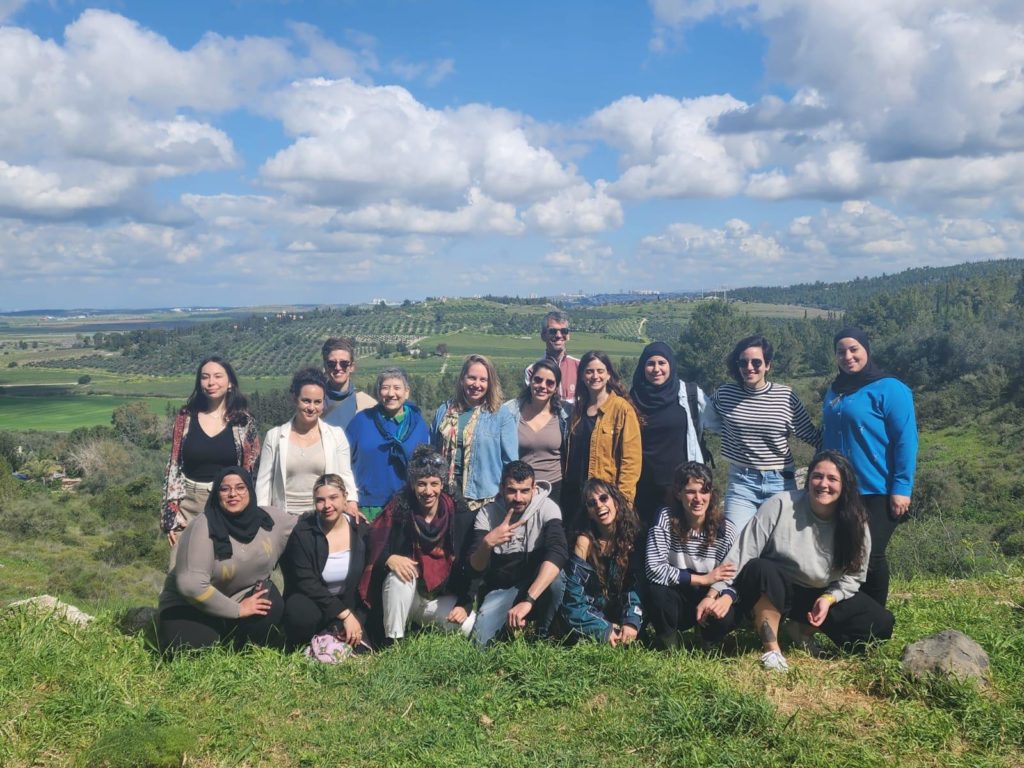Change Agents in Mixed Cities Summary Report | Cohort 7 | 2023-2024
Mixed Cities Course in Numbers
Between October 2023 and March 2024, we held the 7th cohort of our Change ِAgents in Mixed Cities Course. This year, we partnered with the Sikkuy-Aufoq organization to deliver the course. Nineteen participants successfully completed it, including 8 Palestinians and 11 Jews, with 17 women and 2 men. The participants came from the fields of education, activism, and art, and they live and work in the cities of Jaffa, Ramla, Jerusalem, Haifa, Rahat, Nahariya, and Neve Shalom. In total, we held 11 meetings, each lasting 6 hours, including one intensive 3-day weekend. The course comprised a total of 85 study hours.
Like all of our “Change Agents” courses, the Mixed Cities Course is built around three parallel modules: dialogue (bi-national and uni-national), knowledge acquisition (through lectures from 12 field experts and 3 tours), and project development. The course included 3 educational tours – the first in Haifa, led by Khulud Abu Ahmad, a graduate of the 6th cohort of this course; the second in the Negev, organized with the help of one of the participants who lives in the area; and the third, a tour in Neve Shalom, which was organized from start to finish by 3 participants living in Neve Shalom. At the end of the course, one participant commented on the tours, saying: “The tours were led by the participants, and this showed me that we are activists. I really appreciate the course for allowing us to take leadership.”
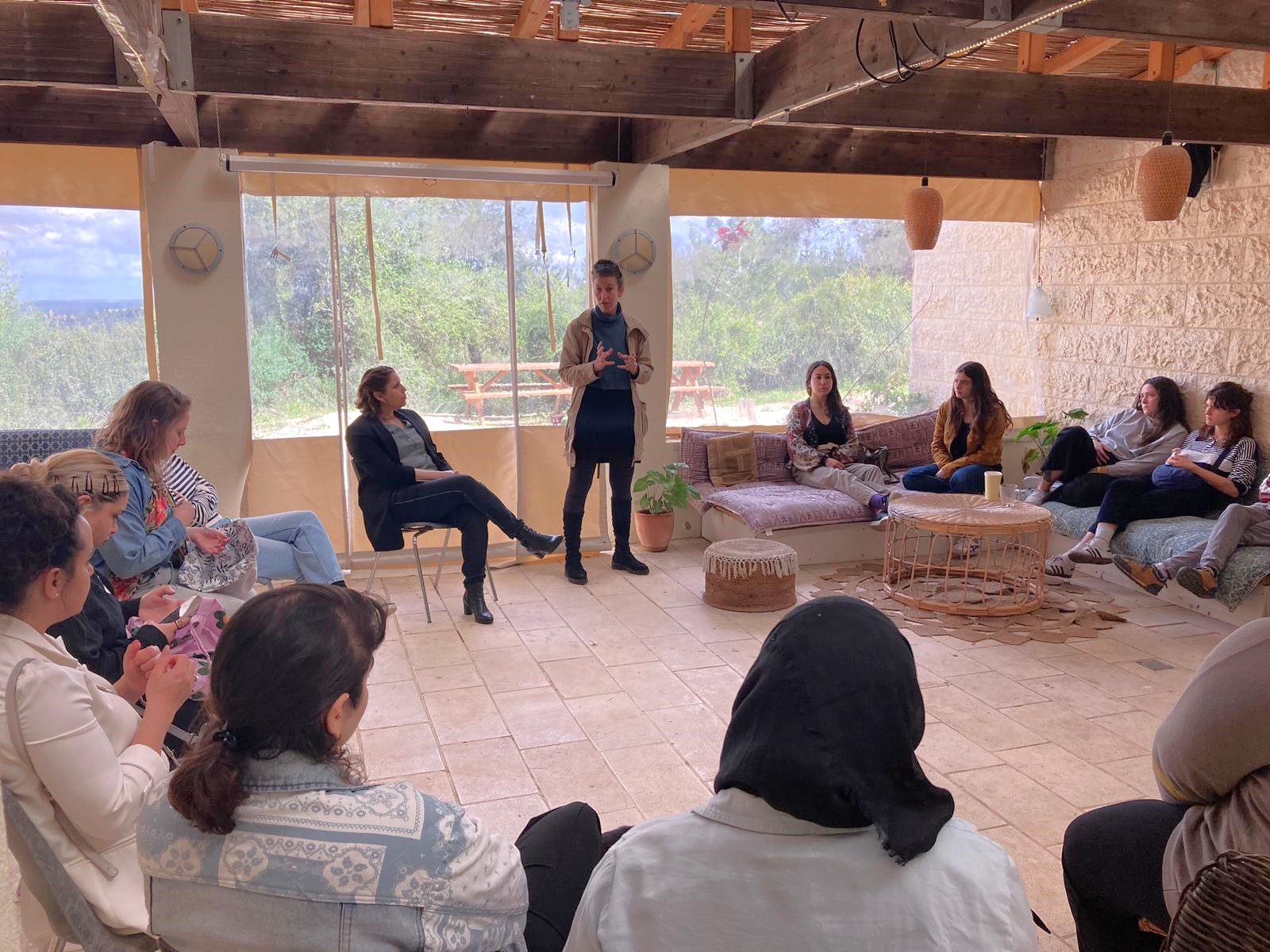
From the tour in Neve Shalom ~ Wahat al-Salam led by the participants, March 2024
__
Course Facilitators
Ibrahim Agbaria – Co-facilitator, The School for Peace
A social worker with over twenty years of experience in therapy, guidance, and group facilitation. For many years, he has facilitated dialogue groups at the School for Peace in Neve Shalom. He is a graduate of the Conflict Group Facilitation Program and the Change Agents in Mixed Cities Course, and he also facilitated the former cycle of this course.
Moran Barir – Co-facilitator, The School for Peace
A group facilitator, specializing in guiding group creative processes, video artist, and political imagination practitioner. Moran works at the intersection of activism, education, and media. She is a graduate of the Conflict Group Facilitation Program and serves as the media coordinator for the School for Peace.
Yael Federman – Partner in Course Design and Policy Initiative Consultant, Sikkuy-Aufoq
Holds a bachelor’s degree in Geography and Environmental Development and Psychology from Ben-Gurion University of the Negev, and a master’s degree in Environmental Planning Policy from Radboud University in the Netherlands. In recent years, she has worked with the ASSAF Aid Organization for Refugees and Asylum Seekers, as a community urban planner at the Lev Ha’Ir Community Council in Jerusalem, and with various civil society organizations. She currently works at Sikkuy-Aufoq as the coordinator of the Shared Public Space Project.
__
When a War Breaks Out: How Do You Begin a Course?
“It became a safe space amidst the horrific events we are living through,” I., a Jewish participant.
“Since the last meeting, I’ve been able to connect with my pain as a Jewish-Israeli, something I wasn’t able to do before. I used to be afraid to feel because I knew my pain was being appropriated and cynically exploited for political purposes. The meeting allowed me to break free from that,” A., a Jewish participant.
Work on the course began in June 2023, establishing the partnership with Sikkuy-Aufoq, designing the syllabus, and preparing for the new cohort. We began recruiting participants in August 2023, conducted interviews with candidates in September and early October, and by the end of the first week of October, we had finalized an impressive and diverse group of 24 participants. The course was supposed to open on October 13, with a two-day opening and introductory weekend (Friday-Saturday) in Neve Shalom ~ Wahat al-Salam.
And then came October 7, which upended everything for all of us.
In the first days of the war, there was great chaos, and we didn’t know if the participants would want to start the course. We decided to cancel the first session, which was planned for October 13-14, and instead conducted individual calls with each participant to check in on how they were doing. We were surprised and pleased to discover that the vast majority expressed a desire to participate in the course as planned. There was even a sense that they needed it and were waiting for it, precisely because of the war. Both because there were no other spaces to meet and talk, and because difficult events were unfolding, which required processing and strengthening partnerships. In retrospect, it can be cautiously stated that the war, along with the political and emotional challenges, intensified the motivation for some of them to participate in the course. This could be seen, for example, in the very low absence rate compared to our other courses.
Thus, we decided to begin the course with a uni-national online meeting on October 27. The decision to hold a uni-national meeting stemmed from the fact that the participants didn’t know each other yet, and we ourselves were not familiar with the group. We wanted to act responsibly and facilitate a meeting that would carefully and gradually build trust and encourage listening. The decision to hold the meeting online was because, during those weeks, there were still many missile attacks across the country, and the roads were unsafe for travel. The purpose of the meeting was to introduce each other in the uni-national format and begin sharing where each person stood amid the general chaos.
On November 10, the group held its first in-person bi-national meeting, which was accompanied by many mixed emotions. On the one hand, there was a celebratory feeling of starting a shared journey. On the other hand, the trauma and terror felt by all the participants, both Jews and Palestinians, were so raw and intense that they overshadowed any ability to celebrate. In the dialogue, one could sense the upheaval that everyone had gone through. There were desires and attempts to build trust and lay a foundation for genuine, honest conversation, alongside sharp questions for the other side about everyone’s stance on the events, accompanied by feelings of anger, disappointment, fear, and resistance.
Subsequently, in addition to the initial changes to the schedule, the war created a need to adjust some of the session topics and their order, and we indeed made relevant adaptations. For example, we decided to bring in Hassan Jabareen, director of Adalah – The Legal Center for Arab Minority Rights in Israel, as the first guest lecturer to speak about the shrinking space for freedom of expression during the war. Also, we invited Fidaa Shehada, a former member of the Lod City Council, to discuss the impact of the war on crime in Palestinian society (see below more details on the lectures in the course).
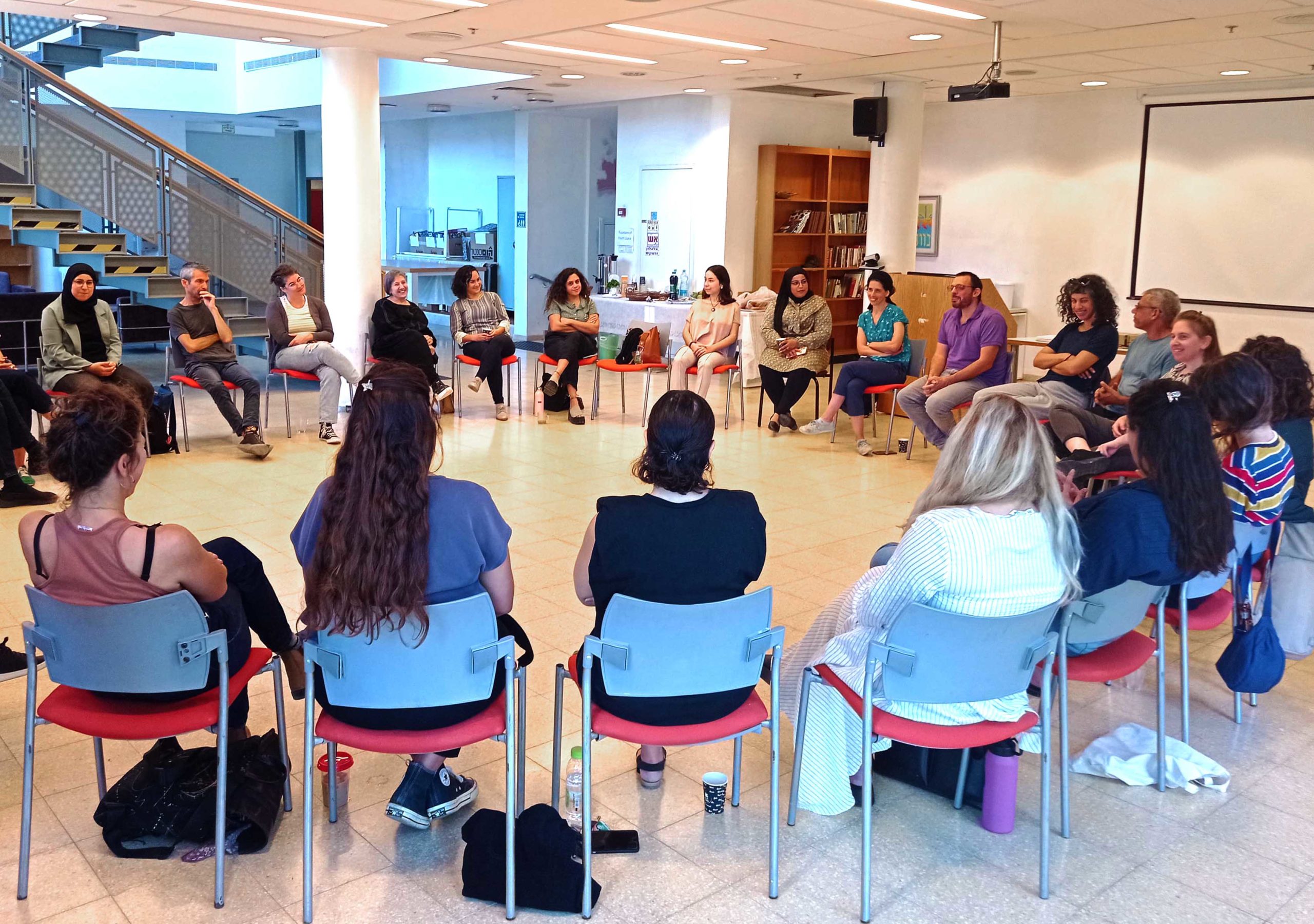
First bi-national meeting, November 2023
__
Dialogue During Wartime
“When I try to remember why I came to the course… I don’t even remember who I was before the war. I’ve gone through a turmoil, I understand the injustices, but it’s hard to know what to do with that. During the meetings, I received answers to many of my questions and understood that it’s possible to create something meaningful within the immense pain.” A, Jewish participant.
“For me, it doesn’t feel like an end but rather the beginning of something else. Suddenly, I want dialogue and confrontations, which I didn’t before. Outside, the gaps aren’t reflected in the conversation; you don’t hear both sides, as if people are giving up before even starting to talk. But here, we made space for it and took the time to focus on it.” Y, Palestinian participant.
“The course opened a window for me to see reality as it truly is.” N, Jewish participant.
Agreeing to undergo a significant bi-national process in the midst of what might be the bloodiest and most brutal war between the two sides is no simple matter and is not taken for granted. Indeed, our participants showed tremendous courage and commitment, simply by agreeing to come, meeting after meeting. Their presence – which was both physical and, more importantly, deeply emotional – allowed for the personal and collective process to be profound and meaningful. More than in other courses, there was ample room for difficult feelings of despair, doubt, fear, as well as great anger and sorrow. It seems that the space allowed for genuine expression, which enabled listening and trust-building, as well as deepening the acquaintance between the sides and movement—both in each person’s consciousness and towards action.
Here are some themes that emerged during the dialogue units:
In the first two meetings, there was initial probing, which was at times very direct and less nuanced than initial probes in other courses, likely influenced by the extremity of the war. There was courage, and presumably also a need, for both sides to “dive into the water” and clarify each other’s positions in light of the events. However, the group also knew how to contain complex statements to allow for safe expression and true listening, and to take a step back when they felt the need to slow down or return to the basics of trust-building. Gradually, a more delicate and complex discourse on identities and positioning in society emerged. Additionally, a question arose regarding the voices not present in the room from both communities—how do we relate to extreme voices? Should we bring them into the room because they are part of society, or leave them out to create the desired safe space for us? Another question that arose early on and accompanied the dialogue throughout was about partnership. The question was posed: what comes first—activism or partnership? There was a group inquiry about their positions regarding partnership and joint or separate action.
As the dialogue progressed, questions of terminology emerged, and how they reflect the different narratives. In a wartime language, several “bombs” were placed in the center of the dialogue room. A question arose regarding Hamas as an organization that also advocates for freedom, the legitimacy that may be implied by this, and other terms that were put to the test, such as shared society, terrorist, and terrorism. Questions were raised about who defines these concepts and what assumptions each side has when using one term or another, how language preserves power relations, and the possibility of changing this through a shift in terminology. There was also discussion on gender, men versus women. The question arose—what does the ratio of men to women in the room (2 men, 17 women) tell us about the outside? Participants noted that in one of the lectures, they heard that men are involved in crime and murder, while in the room we see that women are more involved in change organizations.
In one of the Jewish uni-national dialogue sessions, the group engaged in an in-depth discussion on mechanisms of erasure, how this is reflected in their lives, and what their responsibility for action is once they understand the story that has been silenced and hidden from them. There was also a look to the future—how can we now create a new story that does not erase, rather includes and expands the narrative.
The Palestinian uni-national aspect served as a place for mourning and sharing sorrow because in other places they are not allowed to express those feelings. There was a lot of emotional sharing and a need to talk, and there was a sense that only this group would understand their feelings. There was significant despair about the general situation and a feeling that it’s impossible to change things due to the level of trauma and the emotional intensity related to the war in Gaza and what is happening there. The Palestinian uni-national aspect reflected the degree of oppression and state intimidation and the persecution of Palestinians in Israel surrounding freedom of expression. The meetings created a comfortable platform with a basis of trust for free expression not only of emotions but also of positions regarding what is happening outside and the connection to past and current national trauma.
Following the tour in Haifa, something interesting happened, and there was a significant difference in the focus of each national group: the Palestinian group focused on Palestinian identity and its present expression in public spaces in Haifa compared to other mixed cities where it is erased. In contrast, the Jewish group was focused on questions of relations between Jews and Palestinians: what is the essence of coexistence in Haifa—is it superficial or deep? Is it a worthy model? Must there be a joint struggle for there to be partnership? And more.
As the process drew to a close, the theme of partnership resurfaced. A noticeable difference within the group was the direction of movement—some moved from a strong belief in uni-national work towards believing in partnership, while others moved from a strong belief in partnership to a place that raises questions and a feeling that the partnership has been greatly harmed and that it might not be suitable at the moment. In this place, which dares to raise questions and delve deeply into difficult issues, there is hope for change and for something new and different to grow. The group process was significant in that it caused people to shift on a personal level regarding their consciousness.
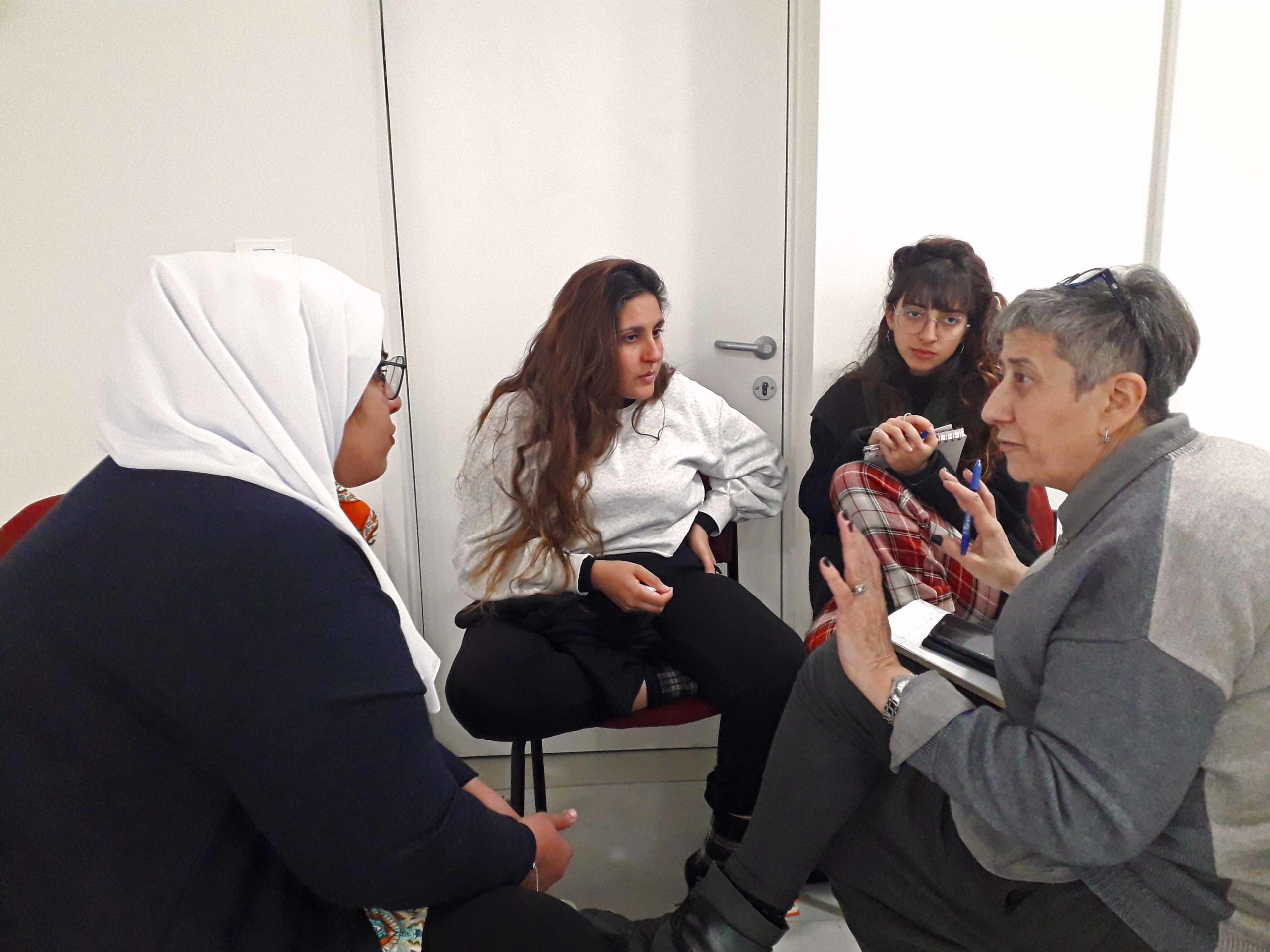
__
Initiatives of Participants
The connection between the participants during the course was special and deep; friendships and political partnerships were formed that continue to this day. Additionally, it was evident that the participants connected deeply with the School for Peace—7 of the course participants attended the alumni conference in May, with one of them volunteering to help with organizing the event. Many participants also attended additional courses and activities of ours—two participants continued to our group facilitation training course that began in June, and three participants continued to a simultaneous translation training course that started during the Mixed Cities course.
Two participants who met in the course and live in the same city began to meet for Arabic-Hebrew language exchange sessions during the course, which continue to this day.
One participant initiated a project at the very start of the course, which she attributes to the course’s influence, involving meetings for young people focused on critical exploration of political reality. This was an open group, meaning anyone could join at any time, and each meeting stood alone. Each meeting featured a speaker from a different field on topics such as an introduction to the occupation, housing issues in Jaffa, parallel narratives about October 7 and the situation in Gaza. The meetings were held once a month from November 2023 to May 2024.
Two participants presented their projects at a panel during the alumni conference:
Einat Betsalel presented the “Multicultural Arts Community for the Performing Arts”—a traveling residency program. This is a unique program that takes place in collaboration with several local cultural centers. The primary aim of the residency program is to provide a space for intercultural dialogue alongside personal and collective artistic research that will lead to a shared cultural-pluralistic creation that contributes to the broader artistic field within the local-geographical-historical context. The artists are engaged in various fields of the performing arts, such as dance, theater, visual arts, cinema, performance, poetry, music, and more.
Inas Osrof AbuSeif presented her project “Will Return,” which she is conducting in collaboration with Noa Sommer Cohen, another participant in the course. The project will explore ownership of houses in Jaffa before 1948, and after approval of research and documentation, ceramic plates will be created detailing information about each house—such as the family name that lived there, family members’ names, and when they were expelled.

Inas presents at the Alumni Conference, June 2024
Other projects started in the course are currently in various stages of development, some of which participate in the project development hackathon offered by the School for Peace to its alumni in September 2024.
In general, many alumni of the course have integrated into action for change and justice in various spaces—at protests against the war, in civil society organizations like Sadaka-Reut, Standing Together, and the feminist media organization Politically Corret. Even in spaces where they previously operated, their training as change agents has brought new content and tools to their work.
__
Lectures by Guest Speakers
The war introduced new challenges regarding Jewish-Palestinian relations in shared spaces, and we took on the task of identifying these trends, learning from experts, and developing strategies to address them. In response, we adjusted the course content for Change Agents in Mixed Cities to reflect the current reality, providing participants with relevant tools and knowledge to act during this time. Simultaneously, as an organization, we learned about the war’s impact on our spaces and our potential responses. Below is a summary of several lectures that were presented during the course.
The first lecture was delivered by Hassan Jabareen, director of Adalah – The Legal Center for Arab Minority Rights in Israel, focusing on the restriction of freedom of expression during the war. The lecture highlighted the growing institutional persecution of Palestinian citizens of Israel since the war began, targeting students, academics, professionals, and public figures. This persecution manifests through arrests, false accusations, denial of due process, and suspensions. [For more information on Hassan’s lecture.]
Another lecture was given by Ofer Dagan, co-director of the Sikkuy-Aufoq organization, offering an analysis of long-standing Israeli economic policies since the state’s founding, which have fostered discriminatory practices, created social disparities, and contributed to the decline in health and welfare services for Palestinian citizens. The lecture also addressed recent efforts to influence these policies and work toward changing the situation. [For more information on Ofer’s lecture.]

Ofer Dagan, December 2023
The third lecture, by Umar al-Ghubari, director of the “Space for Return” program at Zochrot, told the story of the creation of the “mixed cities” through the lens of the Nakba. He demonstrated how these cities, once thriving Palestinian cities, were forcibly turned into mixed cities as a result of brutal ethnic cleansing, leaving unresolved traumas that persist to this day. This, he argued, is why we continue to see violent outbreaks in these spaces, as witnessed in the events of May 2021. [For more information on Umar’s lecture.]

Umar al-Ghubari, December 2023
Other lectures in the course included:
- Fida Shehada from the “Women Against Weapons” movement, who discussed weapons and crime in Arab society amidst the war;
- Aya Zinatey, a feminist activist, who led a workshop on developing initiatives and tools for building projects for activists;
- Prof. Daniel Monterescu, an anthropologist and researcher of mixed cities in Israel, who presented the case of Jaffa and explored examples of mixed cities around the world;
- We also hosted a panel of fieldwork ‘tastings’ from shared living in mixed cities, featuring three speakers: curator Valeria Geselev on the role of art, veteran Jaffa activist and Tel Aviv city council member Abed Abu Shhadeh on gentrification and housing, and Natali Levi, a researcher in the field of education, on bilingual education;
- Additionally, we held a political imagination workshop led by course facilitator Moran Barir, aimed at exercising collective imagination and crafting a clear and desirable shared future vision.

Aya Zinatey, January 2024
__
Summary
Just moments before the course began, we experienced the profound shock of the October 7th massacre and the beginning of the brutal war of annihilation on Gaza, which sadly continues as of this writing, with no end in sight. Despite this challenging backdrop, the 7th cycle of the Change Agents in Mixed Cities course not only launched as planned but concluded successfully. As an organization, we got to practice flexibility and adaptation skills in the face of limiting reality, while our participants underwent a deep process, acquiring tools to understand and confront the reality, and embarked on meaningful action in the field.
We witnessed how political events impact participants’ relationships with the municipal sphere. In a situation where trust in the establishment and its institutions is declining, activists in mixed cities are either unwilling or unable to work within the system. We found that as an organization, we have a role in strengthening activism outside of institutional frameworks and creating an alternative platform for action and networking among activists. Even in the most difficult times, we discovered that there are still people to work with—individuals with the desire, belief, ability, and commitment to continue fighting for a better future, one that includes an end to the war and oppression, and fosters healthy relationships between Palestinians and Jews.
We realized that it is worth fighting to maintain these gatherings, despite the unbearable hardships outside, because it is crucial to create this anchor—for ourselves and for our graduates—from which we can work toward changing reality, even in these times.
__
Photos from the tour to Haifa, January 2024

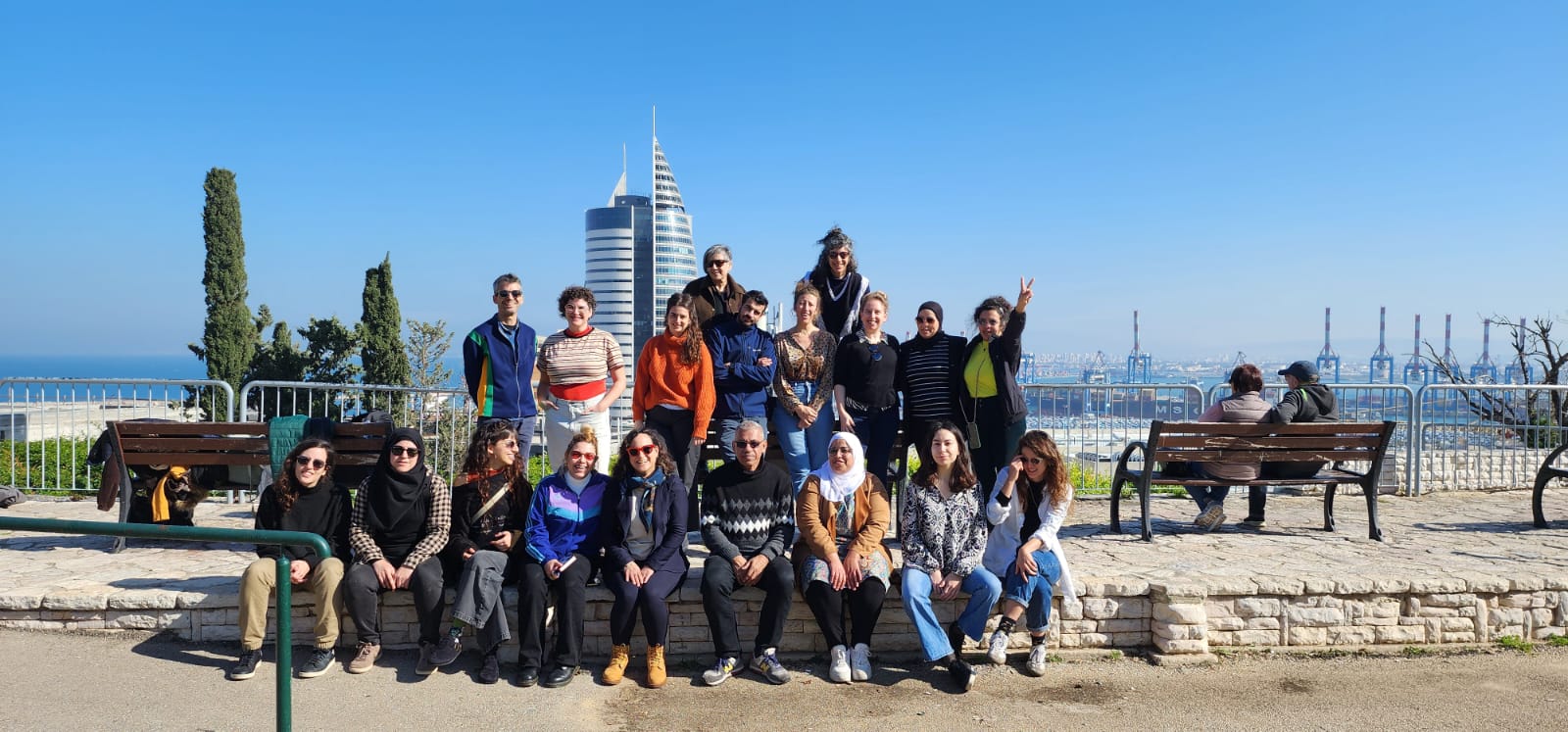
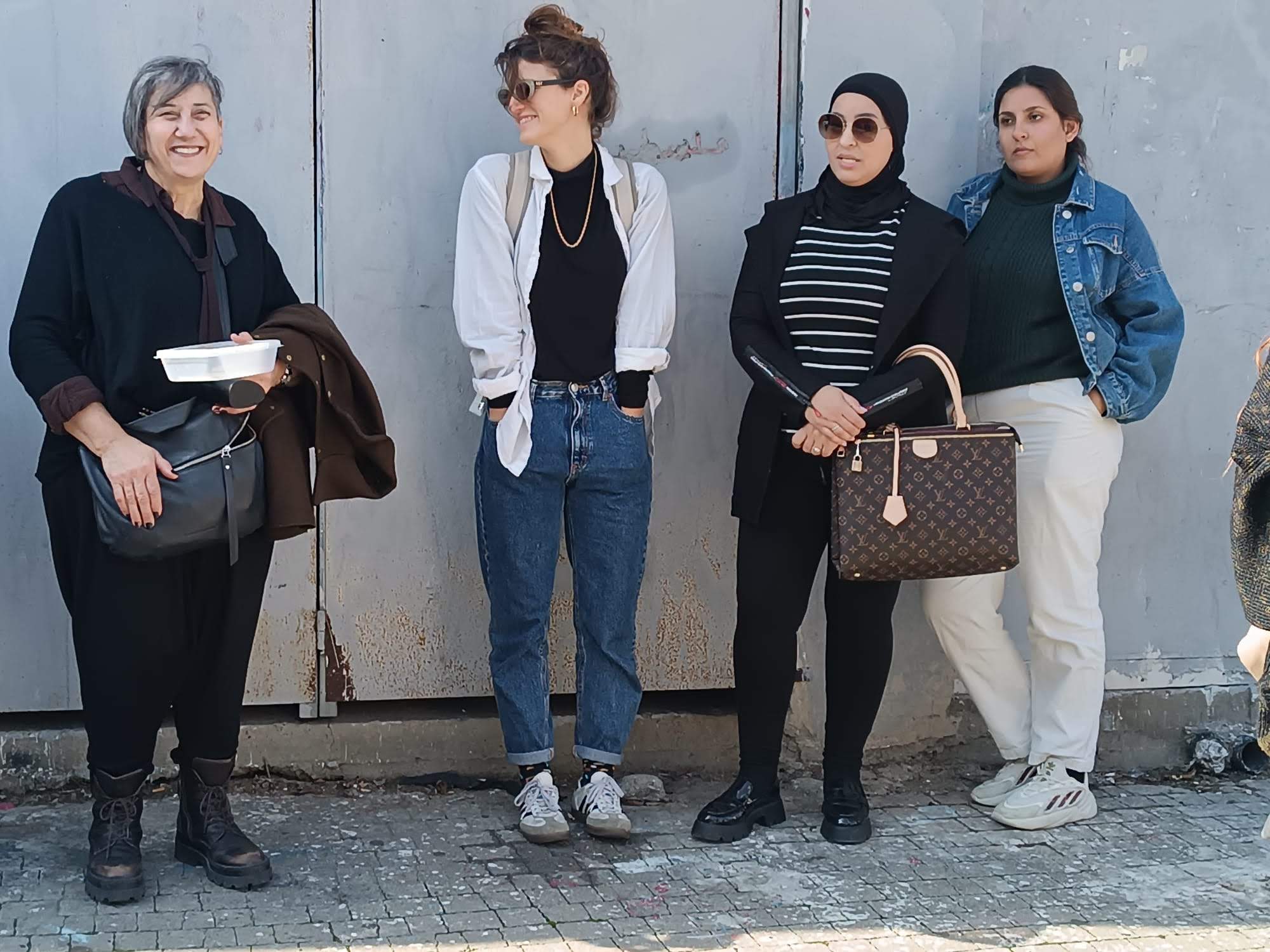
__
Photos from the tour to the Negev – al Naqab, February 2024

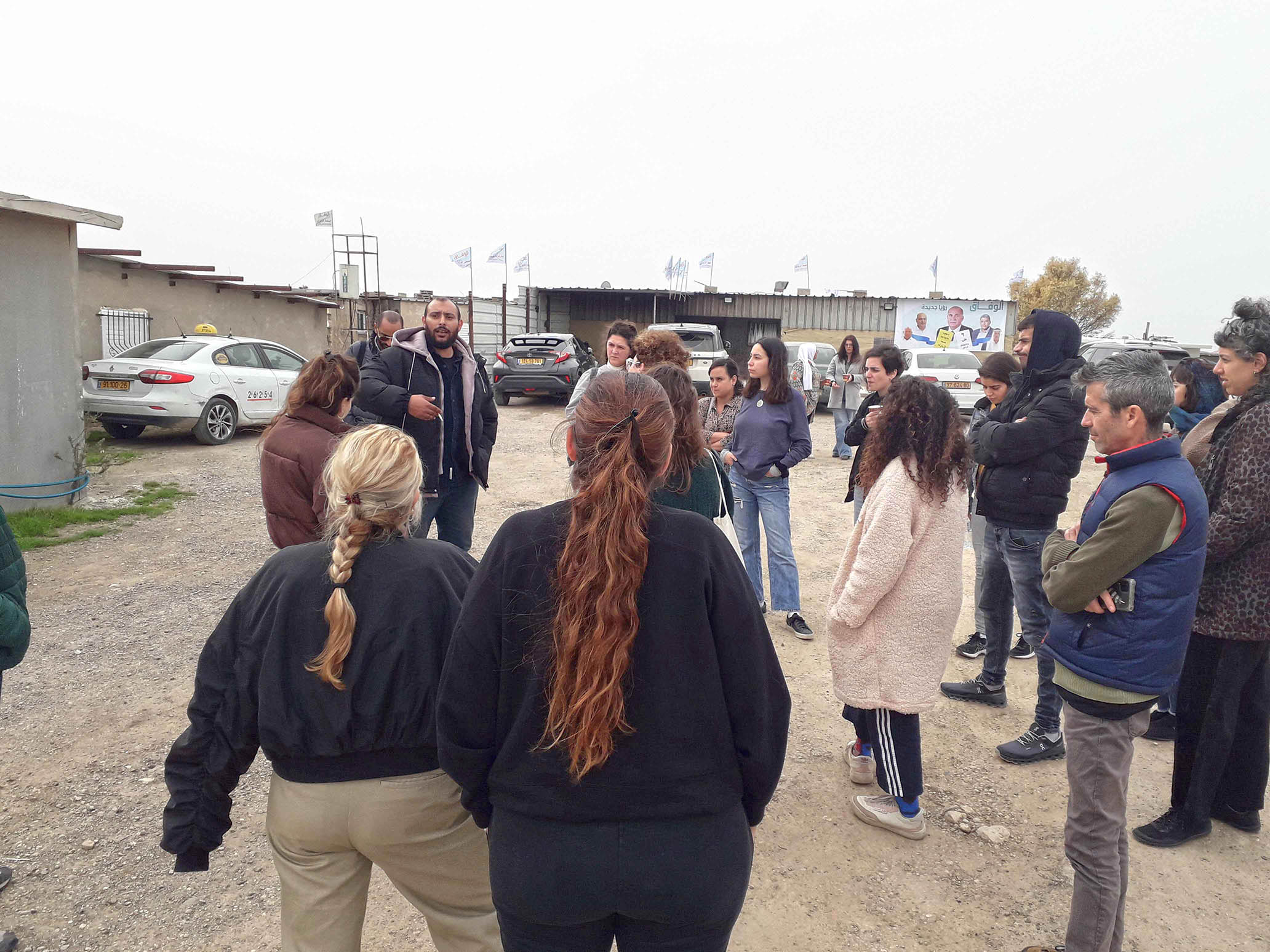

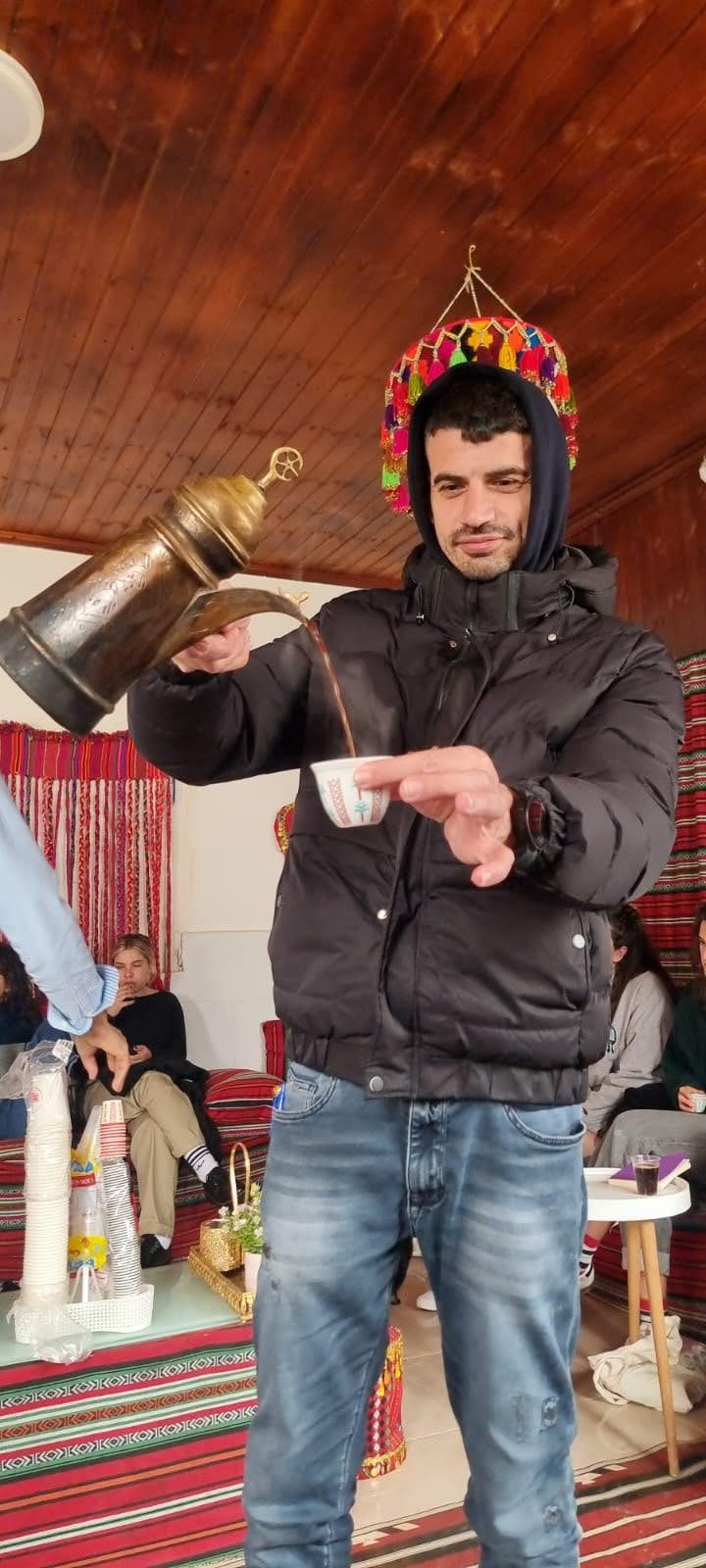
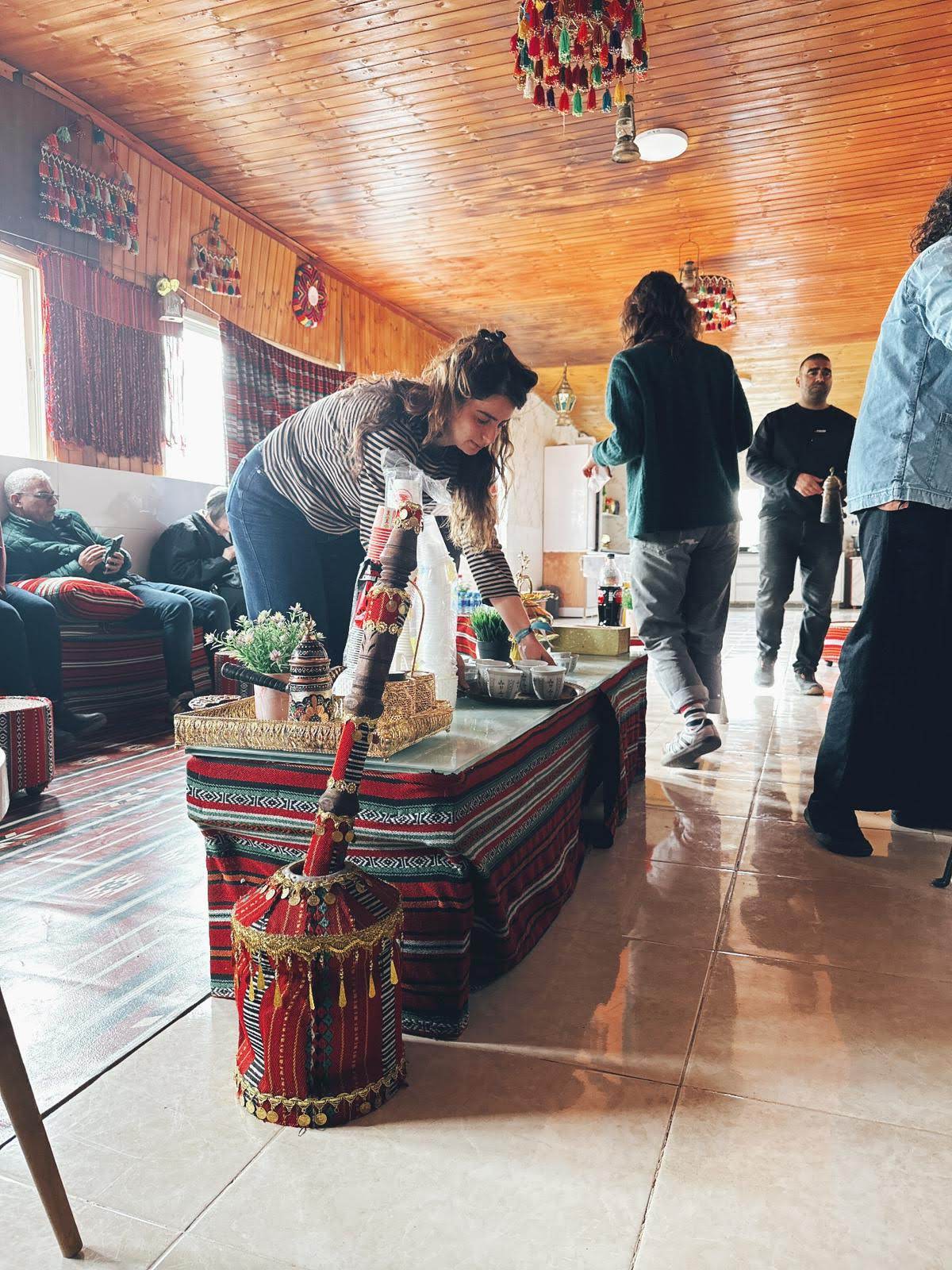
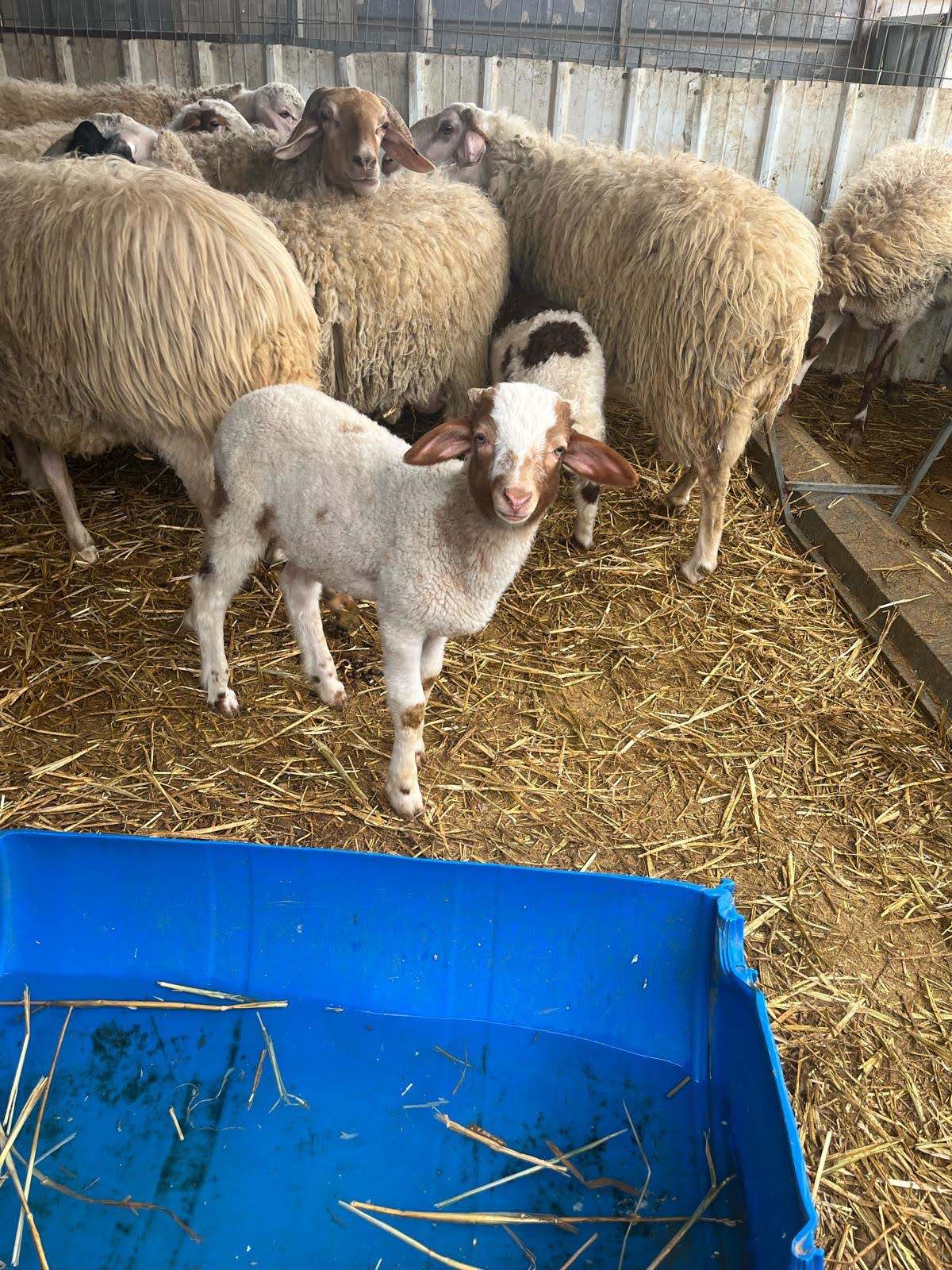
__

